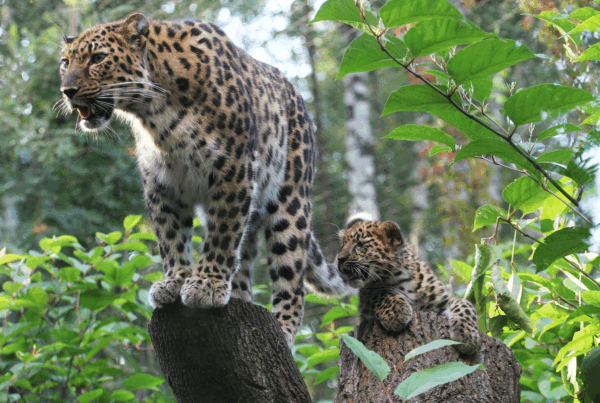- In a significant victory for wildlife conservation, a recent study reveals substantial progress in curbing the trade of big cat-derived products in South Korea.
- The researchers attribute this decline to effective trade bans, changes in consumption patterns driven by South Korea’s economic growth, and a decrease in the social acceptability of such trade.
- Despite the progress, small-scale illegal trade remains a concern. Researchers identified three key areas of worry – online sales, international incidents, tourism and illegal purchases.
A Landmark Study on Wildlife Trade
Published in PLOS ONE on May 15, 2024, the study was conducted by the international conservation charity ZSL, University College London (UCL), and the Tiger and Leopard Conservation Fund in Korea (KTLCF). It reports that South Korea’s trade in big cats and their body parts, including the Critically Endangered Sumatran tigers and Amur leopards, has seen a marked decline since the early 1990s. Back then, South Korea was a major player in manufacturing tiger bone products.
The study draws on over 30 years of records from the Convention on International Trade in Endangered Species (CITES) and insights from experts in wildlife conservation, trade policy, customs, and law enforcement. These sources have highlighted significant changes since the 1990s.

Key Factors Behind the Decline
The researchers attribute this decline to effective trade bans, changes in consumption patterns driven by South Korea’s economic growth, and a decrease in the social acceptability of such trade. Joshua Elves-Powell, the study’s lead author and a dual researcher at ZSL’s Institute of Zoology and UCL, emphasized the importance of these developments:
“Our work offers a reason for optimism. Just 30 years ago, South Korea was one of the world’s most important markets for tiger bone, with around 750 skeletons worth of bones imported into the country between 1970 and 1993. Ending this large-scale and deeply unsustainable trade is a major conservation success. However, action is needed from the South Korean government to address the small-scale, illegal trade that persists to this day.”
The Threat of Small-Scale Illegal Trade
Despite the progress, small-scale illegal trade remains a concern. Researchers identified three key areas of worry:
Online Sales: Multiple attempts to sell big cat-derived products online in South Korea, particularly old bottles of tiger bone wine, were discovered. Sellers often claim these items were inherited or gifted before the trade ban, but such sales are still illegal.
International Incidents: Between 1994 and 2016, customs officials in the USA and New Zealand intercepted several illegal imports of big cat products from South Korea. This includes a case involving 1200 tiger-derived traditional medicine products. There may be ongoing trade in other countries that do not publicly report such incidents.
Tourism and Illegal Purchases: Some South Korean tour companies have been reported to take tourists to sites in Thailand and Vietnam where tiger-derived products are sold illegally, encouraging purchases that violate local wildlife laws.

A Shift in Public Attitudes
Joshua Elves-Powell highlighted a positive trend in public attitudes toward wildlife trade:
“There’s still more progress to be made, but current evidence suggests a major shift around public attitudes to trade. Despite the long history of using and trading big cats in Korea, including for traditional medicinal practices, these recent changes highlight how strict bans can help reduce demand by introducing a social stigma towards trade.”
Global Implications
The study also emphasizes the global nature of wildlife trade issues. Recent reports link South Korea to foreign nationals attempting to smuggle products from Africa and the Russian Far East through Incheon International Airport. This underlines the importance of vigilance at international travel hubs to combat illegal wildlife trade.
*Images taken from the Environmental Investigation Agency





